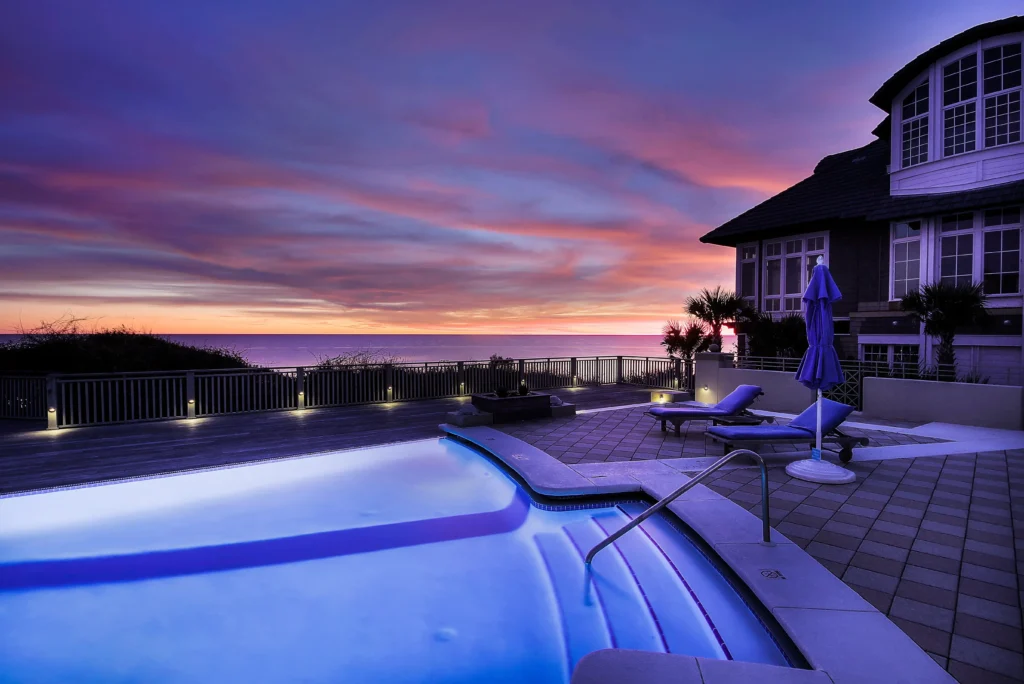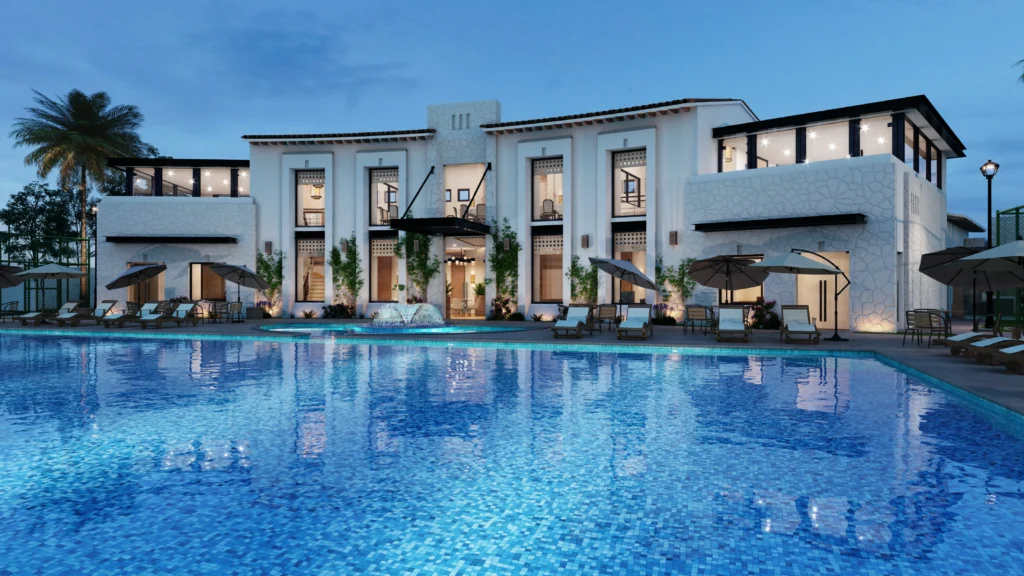How Does the Design of Hospitality Projects Shape a Sustainable Future?
Table of Contents
ToggleThe design of hospitality projects—hotels, resorts, restaurants, and more—plays a pivotal role in sustainability, but how does it influence a sustainable future? Simply put, intentional design choices, from energy-efficient materials to biophilic architecture, reduce environmental impact while enhancing guest experiences and long-term viability. This 2000+ word guide explores the intersection of hospitality design and sustainability, delving into global examples, expert insights, and practical applications. Whether you’re a designer, developer, or student, you’ll discover how innovative design transforms the hospitality industry into a force for good.
Sustainability in hospitality isn’t just a trend; it’s a necessity. With the industry contributing 8% of global carbon emissions (Tourism and Climate Change, 2022), design decisions can exacerbate or alleviate this footprint. Let’s unpack how.

What Are Hospitality Projects? Defining the Scope
Hospitality projects encompass facilities designed for leisure, travel, and dining, including hotels, resorts, restaurants, spas, and event spaces. Their design integrates architecture, interior aesthetics, and operational systems to create memorable guest experiences. “Sustainability in these projects isn’t optional—it’s integral to their longevity,” says Dr. Maria Alvarez, an environmental design expert (Sustainable Architecture Trends, 2023).
These projects vary widely:
- Hotels and Resorts: From boutique inns to luxury chains.
- Restaurants and Cafes: Focused on ambiance and efficiency.
- Event Spaces: Designed for flexibility and impact.
- Tourism Attractions: Like eco-lodges or cultural centers.
Each type offers unique opportunities to embed sustainability through design.
Why Sustainability Matters in Hospitality Design?
The hospitality sector faces intense scrutiny for its environmental toll. A 2021 study by the Sustainable Hospitality Alliance found that hotels alone account for 1% of global emissions, with energy use (heating, cooling, lighting) as the primary driver. Sustainable design mitigates this by:
- Reducing Energy Consumption: Via smart systems and insulation.
- Minimizing Waste: Through modular construction and recycling.
- Preserving Resources: Using local, low-impact materials.
“Sustainability isn’t just eco-friendly—it’s cost-effective,” notes architect Paul Wise (Green Hospitality Design, 2022). Green designs often lower operational costs, appealing to budget-conscious developers.
Key Design Strategies for Sustainable Hospitality Projects
Energy-Efficient Architecture
Passive design—leveraging natural light, ventilation, and insulation—slashes energy use. For instance, orienting buildings to maximize daylight reduces reliance on artificial lighting. A 2020 Energy and Buildings Journal study reported a 30% energy saving in hotels using passive techniques.
Biophilic Design
Incorporating natural elements like green walls or water features enhances guest well-being and reduces cooling needs. “Biophilia connects guests to nature, subtly reinforcing eco-values,” says designer Laura Bennett (Biophilic Design in Hospitality, 2023).
Sustainable Materials
Using reclaimed wood, recycled metal, or low-VOC finishes minimizes environmental harm. “Material choice is a design’s backbone,” says contractor John Lee (Eco-Materials in Construction, 2021). Bamboo, for example, is renewable and durable.
Water Conservation
Low-flow fixtures and greywater recycling are game-changers. A 2022 Hospitality Management Review found that hotels adopting water-saving tech cut consumption by 25%.
Smart Technology
IoT systems—smart thermostats, occupancy sensors—optimize energy use. “Tech makes sustainability seamless,” says tech consultant Sarah Chen (Smart Hotels, 2023).

Global Examples: Hospitality Projects Leading the Way
Saudi Arabia: Red Sea Project
This luxury eco-tourism development uses solar power and zero-waste systems. “It’s a blueprint for desert sustainability,” says Alvarez (Sustainable Tourism in the Middle East, 2022).
India: ITC Hotels’ Green Initiative
ITC’s LEED-certified hotels employ rainwater harvesting and energy-efficient HVAC systems. A 2023 Indian Hospitality Report noted a 20% reduction in their carbon footprint.
Paul Wise’s Eco-Resorts
Architect Paul Wise’s projects, like the Bali Eco-Resort, use local materials and passive cooling. “Every element serves the environment and the guest,” he explains (Green Hospitality Design, 2022).
Showcasing Real-World Impact: A Case Study
Consider the Treehouse Hotel in London, a 2019 project blending urban and eco-design. Architects integrated vertical gardens, solar panels, and reclaimed timber, achieving a 40% energy reduction (Sustainable Hospitality Case Studies, 2021). Manager Emma Thompson shares, “Guests love the green vibe—it feels purposeful.” The hotel’s occupancy rate rose 15% post-launch, proving sustainability’s market appeal (Hospitality Business Review, 2022).
This case highlights## Types of Hospitality Projects: From Boutique to Mega-Resorts
Hospitality projects vary in scale and complexity, each offering unique sustainability challenges:
- Boutique Hotels: Small-scale, often using local materials (Simple Hospitality Projects Examples, 2022).
- Mega-Resorts: Large complexes requiring extensive resource management (Hospitality Construction Projects, 2023).
- Restaurants: Focused on efficient kitchens and waste reduction (Hospitality Interior Design Projects, 2021).
- Student Projects: Experimental designs, like solar-powered pop-up cafes (Hospitality Projects for Students, 2022).
“Sustainable design scales with creativity,” says Bennett (Biophilic Design in Hospitality, 2023).
Challenges and Trade-Offs in Sustainable Design
Sustainable design isn’t without hurdles:
- Higher Initial Costs: Green materials and tech can be pricier upfront.
- Balancing Aesthetics and Function: Eco-features mustn’t compromise guest comfort.
- Regional Constraints: Arid regions like Saudi Arabia face water scarcity challenges (Sustainable Tourism in the Middle East, 2022).
Yet, long-term savings and guest demand—80% of travelers prefer eco-friendly hotels (Global Travel Survey, 2023)—justify the investment.
User Feedback: Real-World Experiences
- Hotel Manager, India: “Our solar panels cut bills by 30%. Guests notice and book more.” (Indian Hospitality Report, 2023)
- Guest, Saudi Resort: “The eco-design felt luxurious, not preachy.” (Red Sea Project Reviews, 2022)
- Designer, UK: “Clients now demand green features—it’s a market shift.” (Hospitality Design Trends, 2023)
These voices confirm that sustainability enhances both profitability and guest satisfaction.
Conclusion: Designing a Sustainable Hospitality Future
So, how does the design of hospitality projects shape a sustainable future? By embedding energy efficiency, biophilic elements, sustainable materials, and smart tech, these projects cut emissions, conserve resources, and elevate guest experiences. From Saudi Arabia’s Red Sea Project to London’s Treehouse Hotel, real-world examples prove that sustainable design is both feasible and profitable. User feedback underscores its appeal, with guests and managers alike praising cost savings and eco-conscious vibes. As the industry evolves, sustainable design isn’t just a choice—it’s the cornerstone of hospitality’s future.
Source List
SEO Tags
Hospitality projects meaning,Hospitality projects examples,Hospitality projects for students,Hospitality projects architecture,Hospitality projects in Saudi Arabia,Hospitality projects in India,Upcoming hospitality projects in India,Paul Wise hospitality projects,Types of hospitality projects,Simple hospitality projects examples,Hospitality projects supplier,Wholesale hospitality design,Hospitality projects factory,Manufacturer of hospitality materials,Cheap hospitality construction,Buy sustainable hospitality materials,China hospitality projects,High quality hospitality design,New hospitality projects,Hospitality construction projects,Hospitality and tourism projects,Hospitality management projects,Hospitality design projects,Hospitality research projects,Hospitality interior design projects,Hospitality industry projects,Sustainable hospitality design,Eco-friendly hotel projects,Green architecture in hospitality,Biophilic design hospitality,Energy-efficient hotels,Sustainable materials hospitality,Smart technology in hotels,Water conservation hospitality,Hospitality project case studies,Boutique hotel sustainability,Resort eco-design,Restaurant sustainable design,Hospitality project challenges,Guest experience sustainability,Hospitality project costs,Regional hospitality projects,Global hospitality trends,Hospitality project feedback,Student hospitality designs,Luxury eco-hospitality,Budget-friendly hospitality projects,Hospitality project innovation,Future of hospitality design,Sustainable tourism projects,
Post Views: 90